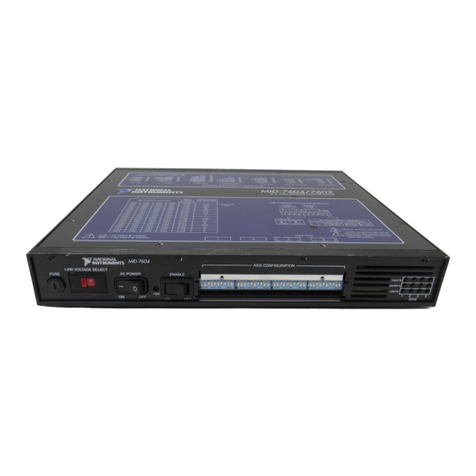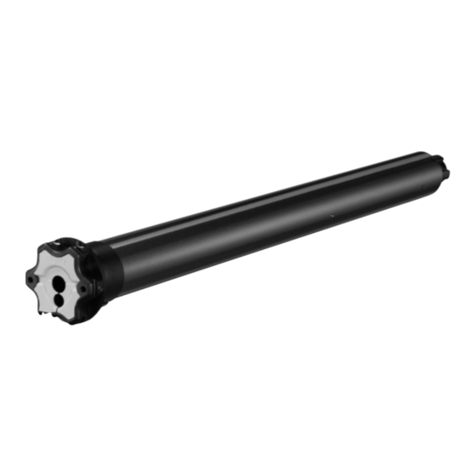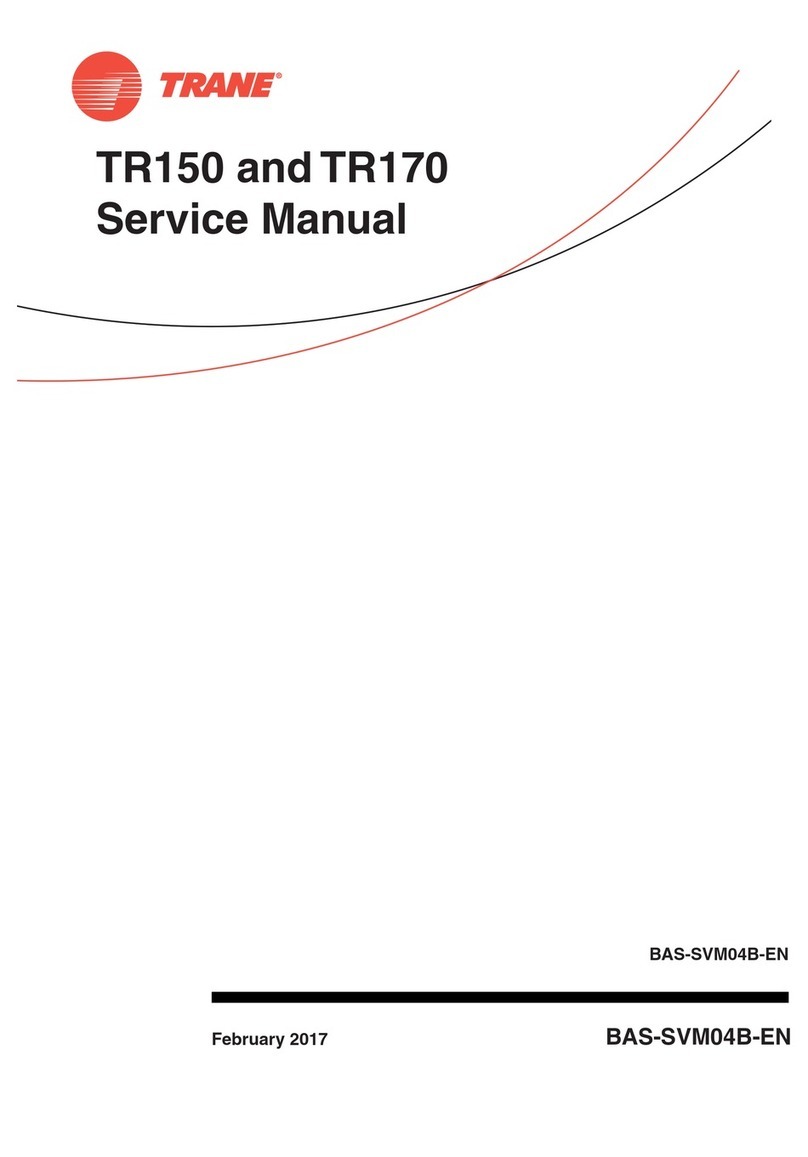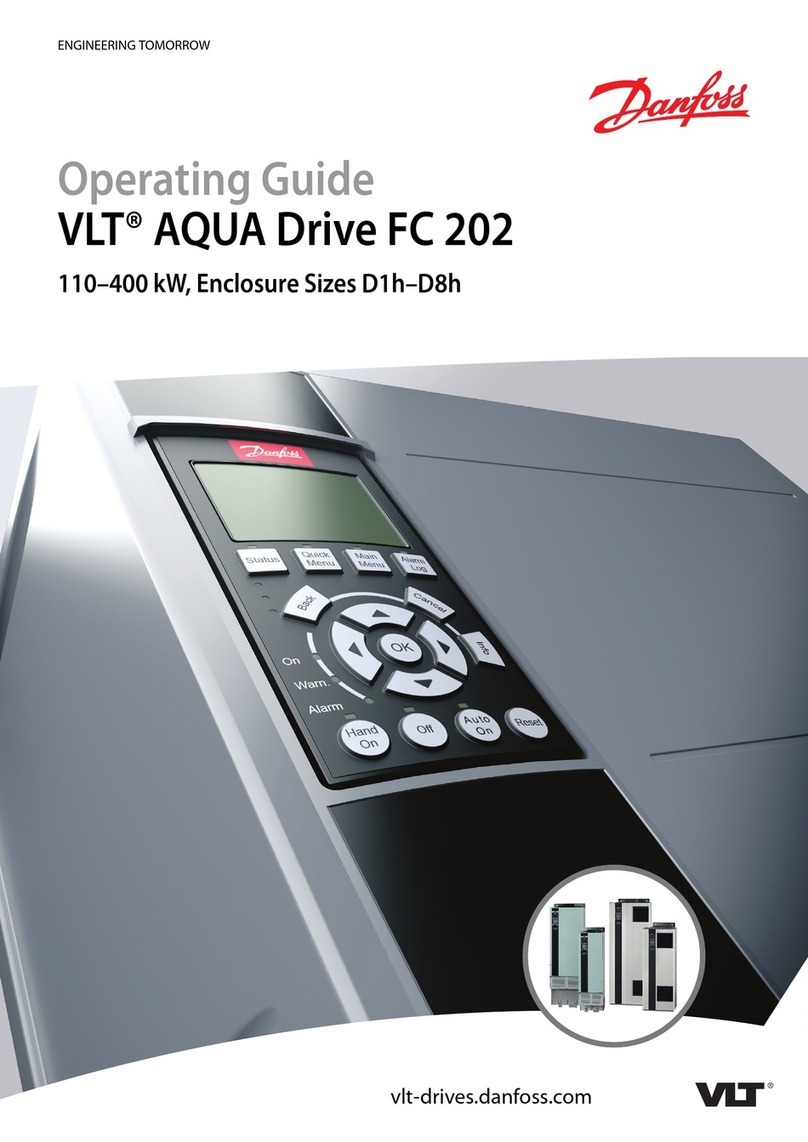Fuji Electric Frenic lift How to use

Starting guide for CAN CiA 417
Dedicated
Inverter for Lift
Applications
3 ph 400 VAC 2.2 –45 kW
1 ph 200 VAC 2.2 –4.0 kW
SG_LM2A_CAN417_EN_0.0.3

Page 2of 21 Fuji Electric Europe GmbH
Version
Changes applied
Date
Written
Checked
Approved
0.0.1
Draft
30.07.2018
J. Alonso
M. Fuchs
0.0.2
CAUTION message is included for DCP
compatibility.
Figure 1.4 and 1.5 modified.
Some text modified or added.
27.09.2018
J. Alonso
M. Fuchs
0.0.3
Table 3.4 text modified.
Figures 8.1, 8.2 and 8.3 added.
Chapter 6 and 7 slightly modified (text and figures).
26.11.2018
J. Alonso
M. Fuchs
J. Català

Page 3of 21 Fuji Electric Europe GmbH
CONTENTS
0. Introduction..........................................................................................................................4
1. Connections.........................................................................................................................4
1.1 CAN bus terminal..........................................................................................................4
1.2 Shield connection..........................................................................................................5
1.3 Terminal resistor............................................................................................................5
2. Virtual console......................................................................................................................6
2.1 Virtual console keys.......................................................................................................6
2.2 Virtual console menus...................................................................................................7
3. Basic setting.......................................................................................................................10
4. Start-up..............................................................................................................................12
5. Lift speed profile settings....................................................................................................12
5.1 Velocity mode..............................................................................................................13
5.2 Profile position mode...................................................................................................14
6. Signals timing diagram for close loop control (IM and PMSM)............................................16
7. Signal time diagram for open loop (IM)...............................................................................17
8. Travel optimization in position mode ..................................................................................18
9. Alarm messages ................................................................................................................20

Page 4of 21 Fuji Electric Europe GmbH
0. Introduction
Thank you very much for choosing FRENIC-Lift (LM2) inverter series.
This starting guide includes the basic information to operate FRENIC-Lift (LM2A) via CANopen CiA 417. To do so a
lift controller based on CANopen CiA 417 is necessary. This starting guide is written from end users point of view (not
developers).
FRENIC-Lift (LM2A) supports Velocity mode (open and closed loop) and Profile position mode.
This starting guide is based on firmware version 1200 or later. For other software versions, please
contact with Fuji Electric technical department.
Firmware version (ROM) can be monitored on TP-E1U in 5_14 and on TP-A1-LM2 in PRG > 3 > 4
For extended information about the product and its use, refer to below mentioned documents:
- FRENIC-Lift Reference Manual INR-SI47-1909_-E (RM).
- FRENIC-Lift Instruction Manual INR-SI47-1894_-E (IM).
- FRENIC-Lift Starting guide SG_LM2A_EN_x.x.x (SG).
CANopen 417 is not compatible with DCP communications (3 or 4). Therefore
Virtual Console of CANopen 417 cannot be used at same time than DCP monitor
function.
1. Connections
1.1 CAN bus terminal
CAN bus terminal is placed in Terminals-PCB and it is called TERM1. Terminal is shown in figure 1.1; the meaning of
each terminal is described in table 1.1.
Figure 1.1.CAN bus terminal
Table 1.1.CAN bus terminal symbols description
Symbol
Description
Comments
CAN+
CAN H
CAN-
CAN L
CANG
CAN ground
Terminal not mandatory. It depends on each CAN bus topology. If there
is no ground cable in CAN bus, don’t connect anything on this terminal.
Blank
Not used
To prevent malfunction against the noise and ensure reliability please use twisted and shielded cables
for CAN bus.

Page 5of 21 Fuji Electric Europe GmbH
1.2 Shield connection
As explained before, it is recommended to use shielded cables. FRENIC-Lift has specific metal plates to connect the
shield of CAN bus wires. The position of the metal plate depends on the inverter capacity. Each plate position is
shown in figure 1.2.
(FRN0011LM2A-7□/
FRN0018LM2A-7□)
(FRN0006LM2A-4□to
FRN0032LM2A-4□)
(FRN0039LM2A-4□/
FRN0045LM2A-4□)
(FRN0060LM2A-4□to
FRN0091LM2A-4□)
Figure 1.2. Metal plate for shield connection position
1.3 Terminal resistor
FRENIC-Lift CAN bus is provided with a terminal resistor. Terminal resistor is placed next to the CAN bus terminal as
shown in figure 1.3.
Figure 1.3. SW5 position in Terminals-PCB.
By default the terminal resistor is disabled (OFF position). If the inverter is one of the end components in CAN bus,
please enable terminal resistor by placing SW5 in ON position.
Figure 1.4 shows a bus configuration where FRENIC-Lift is not at the end of bus, therefore SW5 has to be set to OFF.

Page 6of 21 Fuji Electric Europe GmbH
120 Ω120 Ω
CAN bus line
CAN_H
CAN_L
FRENIC-Lift
Lift
controller Absolute
encoder
Load cell Node n
…….
Figure 1.4. CAN bus configuration where FRENIC-Lift is not at the end
Figure 1.5 shows a bus configuration where FRENIC-Lift is at the end of bus, therefore SW5 has to be set to ON.
120 Ω
CAN bus line
CAN_H
CAN_L
FRENIC-Lift Lift
controller Absolute
encoder
Load cell Node n
…….
ON
Figure 1.5. CAN bus configuration where FRENIC-Lift is at the end
2. Virtual console
FRENIC-Lift has implemented the Virtual console function; therefore it can be operated by means of lift controller
keypad. Data can be monitored by lift controller screen as well. The way to access virtual console and the buttons
functionality differs from each lift controller manufacturer. For additional information how to access virtual console,
please check with each lift control manufacturer.
2.1 Virtual console keys
In table 2.1, the main function for each key on the controller keypad is described. The sign shown in the key column
might differ from the controller’s keypad.
Table 2.1. Virtual console keys description
Key
Role / behavior
S
Move to the next group which is defined in current page.
If the next group is not defined, nothing happens.
In case of “Function setting group” or “F-code + Monitor”, move to corresponding function
setting.
Request writing the value to the function code, then move to “waiting” page.
Decide to execute or not.
Move to previous page in current group.
In case of the first page, move to the last page.
Increment setting value toward maximum value.
Move cursor to “yes”.
Move to next page in current group.
In case of the last page, move to the first page.
Decrement setting value toward minimum value.
Move cursor to “no”.
or
+
Move cursor to the right.
In case the cursor is located at most right, move cursor to most left.
or
−
Move to the previous group which is defined in current page.
If the previous page is not defined, nothing happens.
Back to the original page without storing the function code data.

Page 7of 21 Fuji Electric Europe GmbH
Figure 2.1 shows a flow diagram to move across Virtual console and its menus.
Figure 2.2 shows how to modify the setting of parameter F01 using Virtual keypad keys. The setting of parameter F01
is modified from 1 (default setting) to 2. Parameter is modified as soon as the screen showing the message “Writing
completed” appears.
Figure 2.1 Inverter parameter modification example
F Code
****$******* F01 * 1
Speed command F01 * 2
Analog Reversible
SF code
-
Menu (F code) F code set
+
-
F01 * 2
Analog Reversible
SF code SWriting
Completed
-
2.2 Virtual console menus
Virtual console is organized by different menus; in each menu different information can be monitored or modified. The
name of the menus is listened below:
- Monitor
- I/O check
- Maintenance
- Alarm
- Function codes
- Language setting
P r e s e n t s t a t u s
N o a l a r m
M o n i t o r
* $ * * * * * * * * * * *
P r e s e n t s t a t u s
A l a r m 0 O H 1
I / O C h e c k
* * $ * * * * * * * * * *
F o u t 1 0 . 0 0 H z
F o u t 2 0 . 0 0 H z
I o u t 0 . 0 0 A
V o u t 0 . 0 V
M a i n t e n a n c e
* * * $ * * * * * * * * *
T e r m F R E . . 1 2 3 4 5 6 7 8
* *
T i m e 0 h o u r
E D C 6 1 5 V
T e m p I 2 0 C
T e m p F 2 0 C
Language
* * * * * * * * * * * * $
Language English
Setting screen
S
S
−
+
S
−
+
S
−
+
S
−
+
S
−
+
Alarm occurs
Alarm reset
Home page
Menu group
Monitor group
I/O check group
Maintenance group
Language group

Page 8of 21 Fuji Electric Europe GmbH
Function codes are grouped by families. Families are F, E, C, P, H, L, L1, L2 and L3.
Two types of languages can be selected: English and German.
Tables below show which information can be monitored or modified in each menu.
Table 2.2 Monitor menu
Page No.
Page content
0
Reference speed
Primary speed
Output current
Output voltage
1
Reference speed (pre-ramp)
Detected speed (r/min)
Detected speed (m/min)
Elevator speed (mm/s)
2
Operation status
3
Torque calculation value
Reference torque bias
Reference torque current
Reference torque
4
Estimated value for OL1
Motor temperature by NTC
-BLANK-
-BLANK-
Table 2.3 I/O check menu
Page No.
Page content
0
Terminal input
1
Terminal input (link)
2
Terminal output
3
Analog input 12
Analog input C1
Analog input V2
PTC input (pending)
4
Electric angle (final)
Electric angle
Mechanical angle
Detected magnetic pole position
5
Pulse frequency (A/B)
Pulse frequency (Z)
-BLANK-
-BLANK-

Page 9of 21 Fuji Electric Europe GmbH
Table 2.4 Maintenance menu
Page No.
Page content
0
Cumulative operation time
DC link circuit voltage
Internal maximum temperature
Heat sink maximum temperature
1
Maximum effective current
Capacitance of DC link capacitor
-BLANK-
-BLANK-
2
Cumulative operation time of motor
Cumulative energization time of capacitors on PCB
Cumulative run time of cooling fan
-BLANK-
3
Number of startups
Integral power consumption
Number of RS-485 error
Content of RS-485 error
4
ROM version of inverter
Inverter capacity and voltage
ROM version of Option (Port-C)
Option name (Port-C)
5
Fixed string “Type”
<Inverter type name>
Fixed string “Serial No.”
<Inverter serial number>
Table 2.5 Alarm menu
Page No.
Page content
0
Reference speed
Torque calculation value
Output current
Output voltage
1
Reference speed (pre-ramp)
Detected speed
magnetic pole position offset
-BLANK-
2
Reference torque current
Reference Torque
-BLANK-
-BLANK-
3
Operation status
4
Cumulative operation time
DC link circuit voltage
Number of startups
-BLANK-
5
Internal maximum temperature
Heat sink maximum temperature
-BLANK-
-BLANK-
6
Terminal input
7
Terminal input (link)
8
Terminal output

Page 10 of 21 Fuji Electric Europe GmbH
3. Basic setting
To enable the internal CAN interface it is necessary to setup some basic Function codes. Basic function codes are
shown in table 3.1.
Table 3.1. Basic setting to enable CANopen CiA 417 control
Function
code
Description
Setting
Comments
H30
Communications Link Operation
0033 h
y33
CAN (Operation)
2: Enable (CiA 417)
F03
Rated speed (maximum speed)
30.0 to 6.000 rpm
Motor maximum speed to reach lift
maximum speed (L31).
L31
Elevator parameter (speed)
1 to 4.000 mm/s
Lift speed at maximum motor speed
(F03).
Example 1: 0,6 m/s lift with an Induction motor of 1450 rpm -> F03=1450 rpm, L31=600 mm/s
Example 2: 2,5 m/s lift with a Permanent magnet synchronous motor of 60 rpm -> F03=60 rpm, L31=2500 mm/s
By setting y33=2 the inverter automatically sets the Node ID = 2 and the baud rate to 250 kbps as recommended in
CiA DS 417 standard. If your controller works with different settings, please refer to table 3.2.
Table 3.2. Additional setting to enable CANopen CiA 417 control
Function
code
Description
Setting range
y21
CAN communication
(Node-ID)
1 to 127
y24
CAN communication
(Baud rate)
0: 10 kbps
1: 20 kbps
2: 50 kbps
3: 125 kbps
4: 250 kbps
5: 500 kbps
6: 800 kbps
7: 1 Mbps
To enable all settings related to basic CANopen communication it is necessary to reboot the inverter; it is
recommended to reboot also the Lift Controller. Power down until keypad and charging LED are OFF, then power ON
again. After rebooting, the controller will transmit the specific CANopen objects for the application to the inverter.
When boot up sequence is finished, make sure lift controller does not display any error related to inverter (drive unit).
In affirmative case, please check with lift controller manufacturer.
Additionally make sure there is a value different from 0000h in the parameters shown in table 3.3. If the value is
different from 0000h means that lift controller has set them properly.

Page 11 of 21 Fuji Electric Europe GmbH
Table 3.3. Lift shaft characteristics parameters
Function
code
Description
Setting range
L311
Number of position units (High)
0000Hto FFFFH
L312
Number of position units (Low)
0000Hto FFFFH
L313
Total length in millimetres (High)
0000Hto FFFFH
L314
Total length in millimetres (Low)
0000Hto FFFFH
L317
Min position range limit (High)
8000Hto 7FFFH
L318
Min position range limit (Low)
0000Hto FFFFH
L319
Max position range limit (High)
8000Hto 7FFFH
L320
Max position range limit (Low)
0000Hto FFFFH
L321
Min position limit (High)
8000Hto 7FFFH
L322
Min position limit (Low)
0000Hto FFFFH
L323
Max position limit (High)
8000Hto 7FFFH
L324
Max position limit (Low)
0000Hto FFFFH
If all above parameters remain to 0000h and lift controller does not use them, it is recommended to set the maximum
value on Max parameters and minimum value on Min parameters as shown in table 3.4.
Table 3.4. Lift shaft characteristics parameters recommended setting
Function
code
Description
Recommended setting
L317
Min position range limit (High)
8000H
L318
Min position range limit (Low)
0000H
L319
Max position range limit (High)
7FFFH
L320
Max position range limit (Low)
FFFFH
L321
Min position limit (High)
8000H
L322
Min position limit (Low)
0000H
L323
Max position limit (High)
7FFFH
L324
Max position limit (Low)
FFFFH

Page 12 of 21 Fuji Electric Europe GmbH
4. Start-up
It is recommended to follow the start-up procedures described on FRENIC-Lift LM2A Starting guide. The start-up
procedure is different depending on the motor type (Induction Motor open or closed loop and Permanent Magnets
Synchronous Motor). Start-up procedure can be done either with FRENIC-Lift keypads (TP-A1-LM2 or TP-E1U) or
with Virtual console (described on Chapter 2 of this manual).
In case that your lift controller controls the opening of the brake, make sure that it is disabled during Pole tuning (for
PMS motors) and Auto tuning (for Induction motors). If brake opens, the result of the tuning might be not correct,
additionally the lift car might move without control.
Make sure as well that the travel cancellation due to no movement function is disabled. If your lift controller has this
function activated, due to the non-movement of the lift car during the tuning, it will stop the tuning process. In such
case inverter will trip Er7 (SUB=7 or 24).
As described on the Starting guide, first movement should be carried out in inspection (auxiliary control mode). Check
if the driving direction matches with the commanded direction. If it does not match change the bits 6 and 7 in function
code L310 as shown in table 4.1. This function code is equivalent to CANopen CiA Object 641Eh.
Table 4.1. Function code L310 desciption
Function
code
Description
Setting range
L310
Polarity
0 to 255d
64d: Invert velocity polarity
128d: Invert position polarity
192d: Invert velocity and polarity
At this point, it is important to make sure that the speed monitored in inverter keypad and real lift speed (Speed
shown by shaft encoder or controller) is the same. If this is not the case, check the setting on the function codes F03
(maximum speed) and L31 (Elevator speed). For additional information check Chapter 3 on this guide.
5. Lift speed profile settings
The lift speed profile, in other words, lift comfort, can be adjusted either by CANopen objects or by inverter
parameters. This chapter explains how to adjust speed profile by inverter parameters. In case of CANopen objects
please refer to lift controller. The cross-reference between inverter parameters and CANopen objects is shown in
table 5.1.
Table 5.1. Inverter parameters and CANopen objects cross-reference (Lift speed profile)
Function
code
Description
CANopen object
Default
setting
L302
Profile acceleration in mm/s
640Bh Sub01h
500 mm/s
L303
Profile deceleration in mm/s
640Bh Sub02h
500 mm/s
L304
Profile jerk 1 in mm/s²
640Dh Sub01h
500 mm/s²
L305
Profile jerk 2 in mm/s²
640Dh Sub02h
500 mm/s²
L306
Profile jerk 3 in mm/s²
640Dh Sub03h
500 mm/s²
L307
Profile jerk 4 in mm/s²
640Dh Sub04h
500 mm/s²
L308
Profile jerk 5 in mm/s²
640Dh Sub05h
500 mm/s²
L309
Profile jerk 6 in mm/s²
640Dh Sub06h
500 mm/s²
L333
Motion profile type
6405h
+3
L334
Profile jerk use
640Ch
4
As mentioned before, inverter can work in a CANopen Speed mode or a Profile position mode. This is selected by lift
controller. The difference between Profile position mode and speed mode is that the first one, thanks to a better
accuracy, creep speed is not needed, in other words the deceleration is direct to floor.
Different speed profiles are available depending on the setting of L333 and L334 parameters. On below sub chapters
the different speed profiles available are shown. First speed profile shown corresponds to inverter default setting.

Page 13 of 21 Fuji Electric Europe GmbH
5.1 Velocity mode
L334= 04h
Speed (mm/s)
L304 Time (s)
L302
L303
L303
L306 L305
L305
L307
L307
L333= +3 : Jerk-limited ramp (Deffault setting)
Figure 5.1. Velocity mode speed profile 1
Speed (mm/s)
L19 Time (s)
E12
L333= -1 : Manufacturer specific
L24 L25
E13
L26 L28
E14
L28
Figure 5.2. Velocity mode speed profile 2
L333= 0 : Linear ramps
Speed (mm/s)
Time (s)
L302
L303
L303
Figure 5.3. Velocity mode speed profile 3
L333= +3 : Jerk-limited ramp
L334= 01h
Speed (mm/s)
L304 Time (s)
L302
L303
L303
L304 L304
L304
L304
L304
Figure 5.4. Velocity mode speed profile 4

Page 14 of 21 Fuji Electric Europe GmbH
L334= 02h
Speed (mm/s)
L304 Time (s)
L302
L303
L303
L304 L305
L305
L305
L305
Figure 5.5. Velocity mode speed profile 5
5.2 Profile position mode
L334= 04h
Speed (mm/s)
L304 Time (s)
L302
L303
L307
L306 L305
L325
(mm/s)
L333= +3 : Jerk-limited ramp (Deffault setting)
Figure 5.6. Profile position mode speed profile 1
L333= -1 : Manufacturer specific
Speed (mm/s)
L19 Time (s)
L24 L25
L28
E12
E13
L325
(mm/s)
Figure 5.7. Profile position mode speed profile 2
L333= 0 : Linear ramps
Speed (mm/s)
No S curve Time (s)
L302
L303
Adjusted automatically
for distance control
L325
(mm/s)
Figure 5.8. Profile position mode speed profile 3

Page 15 of 21 Fuji Electric Europe GmbH
L333= +3 : Jerk-limited ramp
L334= 01h
Speed (mm/s)
L304 Time (s)
L302
L303
L304
L304 L304
L325
(mm/s)
Figure 5.9. Profile position mode speed profile 4
L334= 02h
Speed (mm/s)
L304 Time (s)
L302
L303
L305
L304 L305
L325
(mm/s)
Figure 5.10. Profile position mode speed profile 5
L334 (640Ch)= 06h
Speed (mm/s)
L304 Time (s)
L302
L303
L303
L306 L305
L308
L309
L307
C07
(r/min, etc.)
L325
(mm/s)
L367(mm)
Figure 5.11. Profile position mode speed profile 6

Page 16 of 21 Fuji Electric Europe GmbH
6. Signals timing diagram for close loop control (IM and PMSM)
Figure 6.1 shows a complete timing diagram and signals sequence in case of closed loop application. From inverter
point of view, closed loop means that the motor has an encoder (incremental or absolute). Under such circumstance
induction motor and PMS motor are equivalent.
ONSW52-CAN
CANopen State Machine
1: Not ready to switch ON
2: Switch ON disabled
Start/Reset
Node
4: Switched ON
5: Operation enable
3: Ready to switch ON
Auto
transition 06h
ONBRKS
07h 0Fh 07h06h00h
IGBT s ON ON
mm/s
L85 L82
H67+L56
H64
H65
F23
F24
F25
L83
L86
Figure 6.1: Closed loop application time and signals sequence diagram.
Sequence description:
Start:
As soon as State machine moves to “3: Ready to switch ON” state inverter activates the output function SW52-CAN.
This function can be used to control the main contactors (between inverter and motor). Not all lift controllers control
the main contactors with this signal.
Until L85 timer doesn’t elapse, inverter will not move to “4: Switched ON” state after command “07h” is sent by the
controller.
When L85 timer elapses, inverter starts to apply voltage on the output (IGBT’s ON).
As soon as the controller sends “0Fh” command, the inverter starts the timer L82 to open the brake. Not all lift
controllers control brake with this signal.
Until H64 timer does not elapse, inverter will not move to “5: Operation enable” state after command “0Fh” is sent by
the controller.
Soft start function (H65, F23 and F24) is not mandatory. If this function is not needed, these parameters can be set to
0. In such case inverter will start to accelerate the motor to target speed as soon as “5: Operation enable” state is
reached.
Stop:
The diagram shows a Profile position mode movement without creep speed. In case of Speed mode, the speed
diagram will be the same but with creep speed.
When lift reaches floor level the lift controller sends the command “07h”. Even command is set by the controller,
inverter will not switch state machine to “4: Switched ON” until the timer L83 elapses.
When speed level F25 is reached the timers L83 and H67 start.
Until L56 timer doesn’t elapse, inverter will not move to “3: Ready to switch ON” state after command “06h” is sent by
the controller. When L56 timer elapses, the inverter stops voltage on the output (IGBT’s OFF).
Until L86 timer doesn’t elapse, inverter will not move to “2: Switched ON disabled” state after command “00h” is sent
by the controller.

Page 17 of 21 Fuji Electric Europe GmbH
7. Signal time diagram for open loop (IM)
Figure 7.1 shows a complete timing diagram and signals sequence in case of open loop application. From inverter
point of view, open loop means that the motor has no encoder. In this case we speak always about Induction motor.
As the speed accuracy in open loop control is not as perfect as in closed loop, only Speed mode is available.
ONSW52-CAN
CANopen State Machine
1: Not ready to switch ON
2: Switch ON disabled
Start/Reset
Node
4: Switched ON
5: Operation enable
3: Ready to switch ON
Auto
transition 06h
ONBRKS
07h 0Fh 07h06h00h
IGBT s ON ON
mm/s
L85 L82
F22
H65
F23
F24
F25
L83
L86
CANopen Controlword
Figure 7.1: Open loop application time and signals sequence diagram.
Sequence description:
Start:
As soon as State machine moves to “3:Ready to switch ON” state inverter activates the output function SW52-CAN.
This function can be used to control the main contactors (between inverter and motor). Not all lift controllers control
the main contactors with this signal.
Until L85 timer doesn’t elapse, inverter will not move to “4:Switched ON” state after command “07h” is sent by the
controller.
As soon as the controller sends “0Fh” command, the inverter starts the timer L82 to open the brake. Not all lift
controllers control brake with this signal. At same time inverter starts to apply voltage on the output (IGBT’s ON). The
transition to “5:Operation enable” state is direct.
Soft start function (H65,F23 and F24) is not mandatory. If this function is not needed, set H65=0. F23 and F24 needs
to be set with a certain value as in open loop a minimum frequency is needed (in other words, the inverter doesn’t
keep the motor at zero speed).
Stop:
When lift reaches floor level the lift controller sends the command “07h”. Even command is set by the controller,
inverter will not switch state machine to “4:Switched ON” until the timer L83 elapses.
When speed level F25 is reached the timers L83 and F22 start (F21 should be set like F25).
Inverter will move to “3:Ready to switch ON” state after command “06h” is sent by the controller. This will happen
independently of the time set on F22.
Until L86 timer doesn’t elapse, inverter will not move to “2:Switched ON disabled” state after command “00h” is sent
by the controller.

Page 18 of 21 Fuji Electric Europe GmbH
8. Travel optimization in position mode
There are different parameters to optimize the travel in position mode; these parameters are implemented to get the
best stopping accuracy.
The parameters are listed in table 8.1.
Table 8.1. Parameters related to stop accuracy in position mode
Function
code
Description
Default
setting
L352
Early deceleration distance
45 mm
L353
Early deceleration minimum speed
0.0 %
L354
Target offset
0.0
L366
CAN arrival level
10 mm
L377
CAN TR-bit Timer
0.000 s
L199
Operation setting switch 2
- Bit0: Activate TR-bit condition by
L366/L377
0x00h
L352 and L353 are parameters implemented in order to compensate the communications delay, which may deal with
a wrong stopping. Figure 8.1 shows the effect of L352 and L353 due to early deceleration distance.
Position (mm)
Target position (6420h)
Status word (bit10)
TR - Target reached ON
Speed (mm/s)
L352
t
t
Position unit 1 (6383h)
Vmax
V=Vmax*L353
Figure 8.1: Early deceleration distance to compensate communications delay.

Page 19 of 21 Fuji Electric Europe GmbH
With L354, an offset to target position sent by the controller can be added. If L354 has a negative value, the lift will
stop earlier than target position sent by the controller. Figure 8.2 shows the effect of L354 on real position.
Position (mm)
Target position (6420h) -L354
t
Position unit 1 (6383h)
L354
Status word (bit10)
TR - Target reached ON
Figure 8.2: L354 effect on real position.
The target position detection signal can be as well triggered by Position level (deviation) and time. In order to activate
this detection method, bit0 of L199 has to be set to 1. After this, Target position detection signal is triggered by the
parameters L366 and L377. The behaviour of Target reached bit (Status word bit10) according to 366 and L377 is
shown in Figure 8.3.
Position (mm)
Target position (6420h)
Status word (bit10)
TR - Target reached ON
Speed (mm/s)
L366
L377
t
t
Position unit 1 (6383h)
Figure 8.3: Target reached bit (bit 10 of status word) when L199(bit0)=0x01h

Page 20 of 21 Fuji Electric Europe GmbH
9. Alarm messages
Every time inverter trips an alarm it generates a code. This code is specific for FRENIC-Lift and it is shown in Virtual
console. In parallel FRENIC-Lift generates an EMCY message. If the lift controller doesn’t support Virtual console
EMCY message can be monitored in controller’s keypad. In such case, a cross-reference between FRENIC-Lift alarm
messages and EMCY codes is shown in table 9.1.
Table 9.1. EMCY codes cross reference with FRENIC-Lift alarm codes
Alarm
code
(EMCY)
Content
Display
Alarm
code
(EMCY)
Content
Display
0000
No alarm
---
7510
Option communications error
er4
2310
Over current (accelerating)
OC1
8100
Option error
er5
2310
Over current (decelerating)
OC2
F004
Operation error
er6
2310
Over current (constant
rate)
OC3
7200
Tuning error
er7
2330
Ground fault
ef
7510
RS-485 communications error (COM port 1)
er8
3210
Over voltage (accelerating)
0v1
3300
Output phase-failure detection
0pl
3210
Over voltage (decelerating)
0v2
8400
Speed inconsistency/ excessive speed deviation
ere
3210
Over voltage (constant
speed or stopping)
0v3
3221
Data saving error during undervoltage
erf
3220
Under voltage
lv
7510
RS-485 communications error
(COM port 2)
erp
3130
Input phase loss
Lin
5220
Hardware error
erh
4210
Heat sink overheat
0h1
0000
CANopen communication
error
ert
9000
External alarm
0h2
5430
EN circuit failure
ecf
4210
Inverter internal overheat
0h3
8311
Over torque
Ot
4310
Motor protection (PTC/NTC
thermistor)
0h4
7110
Braking transistor broken
dba
4210
Braking resistor overheat
dbh
FF02
EN1/EN2 terminals chattering
Eo
4310
Motor overload
OL1
6320
Customizable logic failure
ecl
4110
Inverter overload
OLU
5220
Hardware error
erh
7310
Overspeed protection
0s
4210
Charging resistor overheat
Oh6
7301
PG wire break
pg
FF03
Rescue by brake alarm
RBA
7300
NTC wire break error
nrb
FF04
Reaching maximum number of trip counter
TCA
5500
Memory error
er1
5440
Short-circuit control error
SCA
7520
Keypad communications
error
er2
FF05
Load cell function
LOC
5220
Terminal block PCB error
er3
FF06
Mock alarm
err
For additional information about the meaning of each alarm code, please refer to other manuals.
Other manuals for Frenic lift
2
Table of contents
Other Fuji Electric DC Drive manuals

Fuji Electric
Fuji Electric Frenic lift User manual

Fuji Electric
Fuji Electric FRENIC-Lift LM2A Series User manual

Fuji Electric
Fuji Electric frenic-hvac User manual
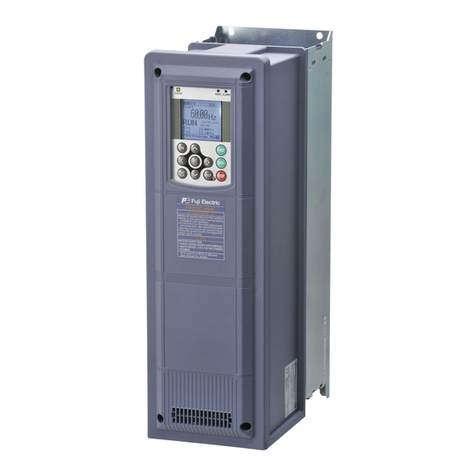
Fuji Electric
Fuji Electric FRENIC-AQUA series User manual

Fuji Electric
Fuji Electric frenic-hvac User manual

Fuji Electric
Fuji Electric FRENIC-Eco Series User manual
